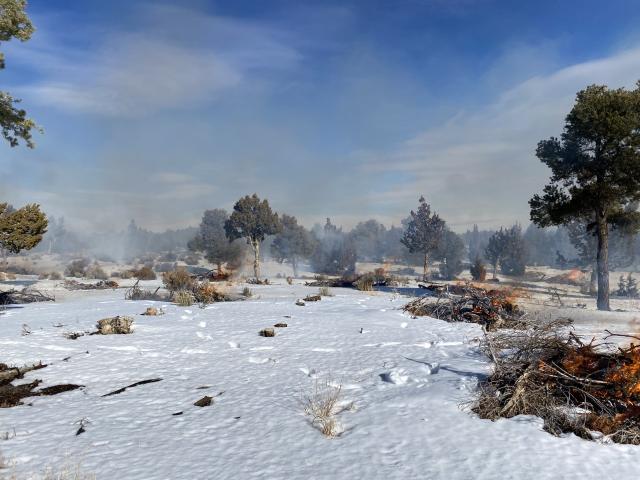BLM to Conduct Pile Burning Activities from December to March
Organization:
BLM Office:
Media Contact:
Battle Mountain, Nev. -- The Battle Mountain District plans to conduct prescribed burning activities from December 1, 2023 to March 1, 2024 in Eureka and Lander Counties.
Prescribed burning is an efficient and cost-effective method to remove accumulated fuels in rangelands and forests. “Removal of fuels increases the chances of successful fire suppression, as well as firefighter and public safety in the event of a large wildfire,” said Robert Burdick, BMD’s Fuels Program Manager.
Prescribed pile burning activities will take place in the Whistler Mountain Range, about 10 miles northwest of Eureka and Shoshone Mountain Range, about 35 miles north of Austin, Nevada. Users and residents of these areas should expect personnel to be operating in the area during and after ignitions. The BMD is posting signs near project areas along state Route 278, U.S. Route 50 and state Route 305 South. Smoke will be visible from the roadways during and after ignitions.
Piles will be ignited to allow for adequate smoke dispersal and burning will not occur on every day during the burn window. These pile burns are highly dependent on weather conditions and fuel parameters and may be postponed until a window of acceptable prescriptive conditions opens.
Look for updates on the BLM Nevada Facebook page and the Battle Mountain homepage at https://www.blm.gov/office/battle-mountain-district-office.
For additional information, please call the Battle Mountain District Office at (775) 635-4000.
The BLM manages about 245 million acres of public land located primarily in 12 western states, including Alaska, on behalf of the American people. The BLM also administers 700 million acres of sub-surface mineral estate throughout the nation. Our mission is to sustain the health, diversity, and productivity of America’s public lands for the use and enjoyment of present and future generations.

